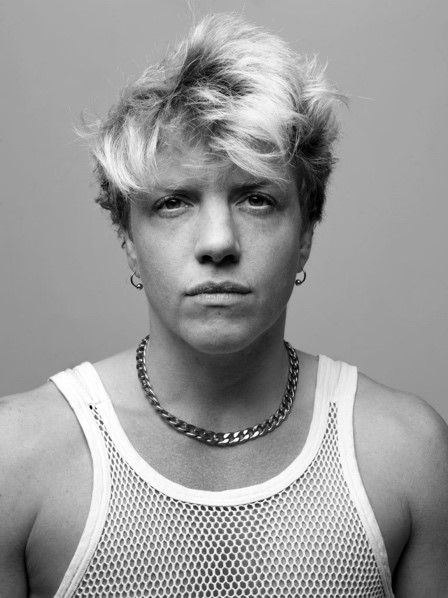Simon(e) van Saarloos- Toevoegen aan herdenken

- Anna Odink
Simon(e) van Saarloos wrote their essay 'Herdenken herdacht’ [1] in 2019 during a visit to Columbia University in New York City. There, they encountered Black feminist thinkers concerned with the question of how a collective archive takes shape. A collective archive is inherently incomplete because it's formed by dominant voices. New stories can only be told in addition to the historical narratives already present. "Like adding a 'Seat at the table'; you can only have a new seat at a table that already exists," clarifies Van Saarloos.
According to Van Saarloos, in the Netherlands, the ways of commemoration are already set. "We commemorate the Second World War because we never want fascism again. But I wonder how one can counter-think fascism when the approach to remembrance is rooted in a predominantly white narrative. In the Netherlands, we strongly lean towards a morality around the idea of listening to stories, believing that they will make you empathetic. But does this empathy actually help to think differently? The traditional commemoration of the Second World War distracts from the ongoing presence of contemporary fascism.”
In 'Herdenken herdacht', Van Saarloos reflects on the Dutch tradition of commemoration, where the past is considered a fixed phenomenon. While new perspectives may be added, what we regard as the past remains unchanged. “So, it's not just about who deserves commemoration, but also about how we commemorate because the way we commemorate always excludes and categorizes.”
Redefining commemoration
According to Van Saarloos, commemoration in public space can take many forms. "The moment I can't cross the sidewalk, for example, because I use a wheelchair, serves as a moment of commemoration for me. That, in itself, is a monument: it tells a story of the exclusion in public space of people with disabilities.”
Regarding the concept of commemoration, Van Saarloos focuses less on the monumental and more on performative aspects. "Statues or monuments might have more significance for the general public because they, for instance, are cast in bronze, and thus have a fixed form. I don't believe we should seek change within existing frameworks, but rather lean towards small performative moments or actions. Performativity is less fixed than monumentality. It may not receive recognition from everyone, but that's not where I find the radicality. The radicality lies in constantly playing with what isn't there."
Queer Remembrance
In the opinion of Van Saarloos, performative commemoration aligns with queer commemoration. "It happens when you see another queer trans person and there's a sort of moment of recognition. In material terms, clubs or bars are part of queer remembrance. An important question is how we create spaces where people can come together. Especially because the city currently makes it impossible to maintain space for those who aren't affluent."
When asked if public space has seen better representation in the five years since the publication of 'Herdenken herdacht', Van Saarloos says, "Efforts have indeed been made to add inclusivity to public space. But I fear that institutions or individuals who create protocols for public space actually don't change the old form. I'm not sure if public space has become more inclusive. At least, I don't know anyone who feels that way. What I do find a positive development is that statues are more frequently defaced." Van Saarloos notes a decrease in 'respectability' politics, the idea that you gain more influence by behaving properly, overall. “The suppression of demonstrators protesting against genocide and occupation, and expressing solidarity with Palestine, serves as an illustration of this point. Protest, usually defended as 'free speech', is radical in this case."
Foto: Annaleen Louwes
About Simon(e) van Saarloos
American-Dutch writer Simon(e) van Saarloos wrote the essay ‘Herdenken herdacht: Een essay om te vergeten’ in 2019. Its English translation, titled ‘Take 'Em Down: Scattered Monuments & Queer Forgetting’, was published in 2022. The essay partially served as inspiration for the project The spread of a mo(nu)ment for which Van Saarloos and TAAK invited eleven artists in 2021 to create a new monument. These could be temporary, small, or less visible monuments. Less conspicuous monuments can be of great importance because they don't need to appeal to the larger public or fit the mold of how we commemorate in the Netherlands. Van Saarloos asked the artists: “In what ways is your monument accessible – does your monument require sight, smell, hearing, speaking, touch, walking, monetary privilege, passport access?”
Currently, Van Saarloos resides in Berkeley, California, where they are pursuing a PhD research. I spoke with Van Saarloos on a Thursday evening in December '23 via a video connection about their book that relates to the theme of the exhibition Searching For Oneself Outside, the first exhibition of 2024 at Nest.
